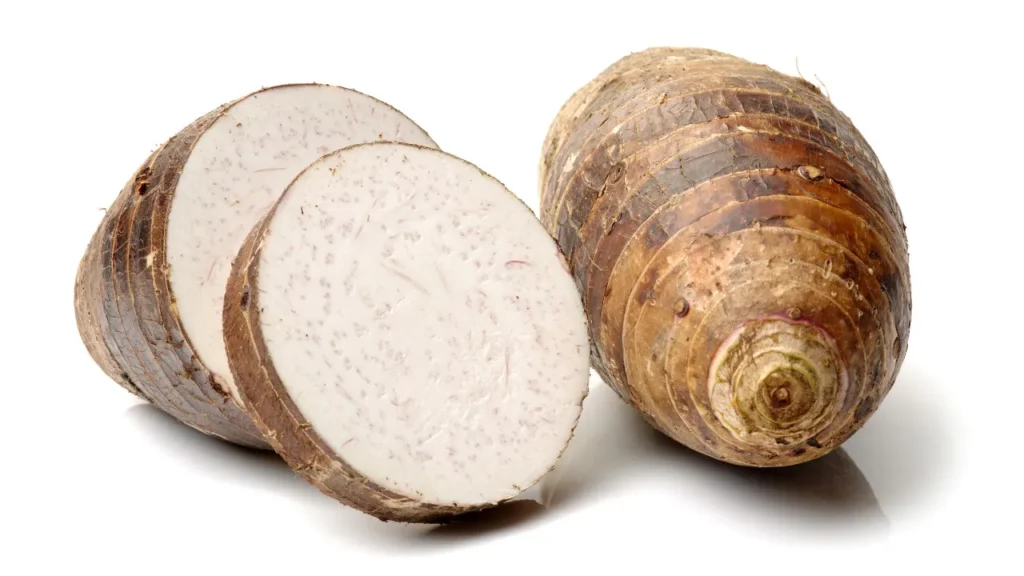Native to North America, the wild yam (Dioscorea villosa) has been utilized for millennia in herbal therapy. The wild yam’s tuberous roots contain a variety of bioactive substances, including as steroidal saponins, diosgenin, and alkaloids, which are thought to have a number of positive health effects. This article tries to provide a thorough examination of the chemistry of wild yam, as well as information on its health advantages, recommended dosage, negative effects, probable drug interactions, and optimum ethical usage.
You May Also Like:
CBD for Concentration: 3 Epic Benefits that Boost Your Focus
CBD for Concentration: The Productivity Hack for Energy and Focus
Wild Yam: Benefits, Dosage, Side Effects, Drug Interactions, And Other Important Information is an original (NootropicsPlanet) article.
Nature of Wild Yam
The perennial wild yam (Dioscorea villosa), which is endemic to North America, is distinguished by its heart-shaped leaves and tuberous roots. Wild yam roots contain a variety of bioactive substances, including tannins, phytosterols, alkaloids, and steroidal saponins. Diosgenin, which in lab conditions functions as a precursor to steroid hormones, is the main steroidal saponin found in wild yam. The biological activity and potential health advantages of the plant are caused by these bioactive substances.
Discover Amazon’s Best Wild Yam Creams for Hormone Balance and Skin Health—Shop Now!

Health Benefits of Wild Yam
Numerous health advantages of wild yam have been suggested, some of which have been verified by research. These advantages consist of:
Hormonal Harmony: The steroid hormones progesterone, estrogen, and corticosteroids are all precursors to diosgenin, which is found in wild yam. This has given rise to the idea that wild yam may assist in regulating hormone levels and easing symptoms brought on by hormonal imbalances, such as premenstrual syndrome or menopausal symptoms. It’s crucial to keep in mind that the conversion of diosgenin into active hormones takes place in a laboratory and cannot happen in the human body.
Anti-inflammatory Effects: It has been discovered that wild yam possesses anti-inflammatory qualities, which could help reduce the symptoms of numerous inflammatory disorders. Inflammation and immunological response are thought to be modulated and reduced by the steroidal saponins found in wild yam, potentially alleviating symptoms of inflammatory bowel disease and rheumatoid arthritis.
Effects of Antispasmodics: Historically, wild yam has been used as an antispasmodic to treat cramps and spasms in the muscles. According to studies, its alkaloids, which can help relax smooth muscle tissue and ease menstrual cramps, muscle pain, or gastrointestinal discomfort, may be the cause of its antispasmodic benefits.

Chemistry of Wild Yam
Wild yam contains the steroidal saponin diosgenin, which is the main bioactive component. A class of naturally occurring compounds known as steroidal saponins has a steroid backbone and sugar moieties. Progesterone, estrogen, and corticosteroids are all steroid hormones that are precursors to diosgenin. Alkaloids, tannins, and phytosterols are additional bioactive substances present in wild yam, and they might also contribute to its biological activity.
Physiological Mechanism of Action
The presence of bioactive chemicals, particularly diosgenin, which has been found to affect many biological processes within the body, can explain the physiological mode of action of wild yam. Hormonal balancing, inflammatory management, and muscular relaxation are examples of these processes.
Hormonal Harmony: Although diosgenin cannot be converted into active hormones by the human body, the presence of hormone-like compounds in wild yam has been suggested to influence hormonal balance. The specific process by which wild yam affects hormone levels is unknown, however the plant’s components are thought to interact with hormone receptors or control hormone production.
Achieve Hormone Balance and Skin Vitality with Amazon’s Top Wild Yam Creams—Explore Here!

Anti-inflammatory Properties: Wild yam steroidal saponins, particularly diosgenin, have been demonstrated to have anti-inflammatory effects. These substances are thought to influence the immune response and prevent the synthesis of inflammatory mediators including prostaglandins and leukotrienes. This can aid in the reduction of inflammation and the relief of symptoms associated with a variety of inflammatory disorders.
Antispasmodic Actions: The alkaloids found in wild yam have been linked to the plant’s antispasmodic properties. These chemicals may interact with smooth muscle tissue. They induce relaxation and minimize muscular spasms. This may alleviate symptoms such as menstrual cramps, muscle pain, or stomach discomfort.

Optimal Dosage of Wild Yam
The recommended dose of wild yam varies according to individual needs, formulation, and targeted health benefits. The following dosages are advised as a basic guideline for various kinds of wild yam:
- Dried root: 0.8 – 3mg/kg of bodyweight.
- Tincture (1:5 in 40% alcohol): 2 to 4 mL, taken three times daily
- Standardized extract (containing 16% diosgenin): 100 to 400 mg, taken daily
Before introducing wild yam into a daily regimen, people with pre-existing medical issues or those taking prescription medications should contact with a healthcare expert.
Side Effects of Wild Yam
While wild yam is generally considered safe to eat, some people may experience side effects. These can include gastrointestinal issues like nausea, vomiting, or diarrhea. Wild yam has been linked to allergic reactions such as skin rashes, itching, and difficulty breathing on rare occasions. If adverse effects occur, it is critical to quit use and seek advice from a healthcare practitioner.

Potential Substance Interactions with Wild Yam
There has been little research on potential substance interactions with wild yam, however it is crucial to examine the impact on medication and supplement absorption and metabolism. When using wild yam, keep the following interactions in mind:
Medications for Hormones: Because wild yam contains diosgenin, a precursor to steroid hormones, it may interact with hormonal medications like HRT, oral contraceptives, or corticosteroids. Although diosgenin cannot be converted into active hormones by the human body, the presence of hormone-like compounds in wild yam may influence the efficacy of hormonal medications. Individuals taking hormonal medications should consult a doctor before using wild yam.
Best Wild Yam Creams on Amazon for Hormone Balance and Radiant Skin—Shop Now!

Anticoagulant and Antiplatelet Drugs: When combined with anticoagulant or antiplatelet drugs, wild yam has been shown to have mild blood-thinning effects, which may increase the risk of bleeding. Warfarin, heparin, clopidogrel, and aspirin are examples of these drugs. Before using wild yam, people who are using anticoagulant or antiplatelet drugs should visit a doctor.
Best Responsible Uses of Wild Yam
It is critical to use wild yam appropriately in order to maximize the possible benefits while reducing the hazards. The following suggestions can assist in ensuring safe and successful use:
Consult a Medical Professional: Before introducing wild yam into a daily regimen, people with pre-existing medical issues or those taking prescription medications should visit a healthcare practitioner. A healthcare expert can provide tailored advice on dose and potential interactions with other substances.
Gradual Dose Modification: When first starting wild yam, start with the lowest advised dosage and gradually raise the amount as needed. This allows the body to acclimatize to the supplement and reduces the likelihood of negative effects.
Keep an eye out for side effects and interactions while using wild yam. Users should closely monitor for any side effects or changes in the effectiveness of medications or supplements. If adverse effects occur or there are questions about potential interactions, it is critical to seek the advice of a healthcare expert.
Wild Yam:
Conclusion
The wild yam, native to North America, has been a staple in herbal therapy for centuries. Its tuberous roots boast a rich composition of bioactive substances. These include steroidal saponins, diosgenin, and alkaloids. They offer a myriad of potential health benefits. Wild yam is noteworthy for its hormonal harmony. It also has anti-inflammatory effects and antispasmodic actions that promote well-being.
Understanding the chemistry of wild yam reveals diosgenin as the primary bioactive component. Diosgenin influences various physiological processes. The plant’s hormone-like compounds may contribute to hormonal balance. However, its conversion into active hormones in the human body is limited.

References:
- Diosgenin: Recent Highlights on Pharmacology and Analytical Methodology. Retrieved from: https://www.ncbi.nlm.nih.gov/pmc/articles/PMC5225340/#:~:text=Diosgenin%2C%20a%20steroid%20saponin%20which,%2Dinflammatory%2C%20and%20antiproliferative%20activities.
- What Is Wild Yam Good For? Retrieved from: https://www.medicinenet.com/what_is_wild_yam_good_for/article.htm
- Wild Yam. Retrieved from: https://examine.com/supplements/wild-yam/
Important Note: The information contained in this article is for general informational purposes only, and should not be construed as health or medical advice, nor is it intended to diagnose, prevent, treat, or cure any disease or health condition. Before embarking on any diet, fitness regimen, or program of nutritional supplementation, it is advisable to consult your healthcare professional in order to determine its safety and probable efficacy in terms of your individual state of health.
Regarding Nutritional Supplements Or Other Non-Prescription Health Products: If any nutritional supplements or other non-prescription health products are mentioned in the foregoing article, any claims or statements made about them have not been evaluated by the U.S. Food and Drug Administration, and such nutritional supplements or other health products are not intended to diagnose, treat, cure, or prevent any disease.
Unlock the Benefits of Wild Yam Cream for Hormone and Skin Health with Amazon’s Best—Shop Now!



